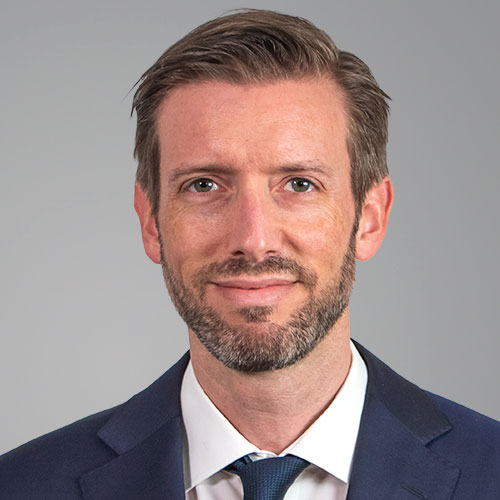In an exclusive interview with Fredrik Langenskiöld, Senior Alternative Investment Specialist at UBP, FundsPeople explores the firm's alternative fund selection process.
With more than two decades of experience in alternative asset management, Langenskiold shares the principles that guide his decisions, highlighting the importance of track records, operational quality and technological innovation.
Fredrik Langenskiold, who has dedicated 21 years to alternative asset management, stresses the importance of maintaining separate teams for the selection of traditional and alternative funds. "We believe that the characteristics for selecting a hedge fund are different from those of a long-only fund," explains Langenskiold. This distinction allows UBP to address the unique complexities of each type of investment, ensuring a thorough and specialised analysis.
The importance of a solid track record
The first critical aspect in the selection of alternative funds is the track record of the fund and its manager. According to Langenskiold, a fund must have at least three years of proven track record to be considered. However, in cases where the manager already has previous experience with the same team in another fund, this requirement can be relaxed, as long as that previous track record can be "verified and trusted".
This track record not only reflects the manager's ability to handle complex investments, but is also an indicator of how he or she has navigated market fluctuations and financial crises.
As Langenskiold says,
A strong track record is essential to build investor confidence and ensure that the fund has the ability to deliver consistent returns.
In the competitive world of hedge funds, this confidence is key.
The weight of asset size
Another crucial factor is the volume of assets under management (AUM). Langenskiold stresses that, generally, the minimum threshold is USD 100 million in AUM to enter the analysis process, although those with higher asset volumes are prioritised, indicating a certain stability and ability to handle complex operations. "This threshold can vary depending on the fund's strategy," he says, noting that simpler strategies can operate with lower volumes, while more complex ones require higher AUM levels to be viable.
The logic behind this criterion lies in economies of scale and the manager's ability to bear the operational costs associated with managing complex strategies. "A fund with low AUM may not be able to sustain itself over the long term," warns Langenskiold, which could put the investment at risk.
Fees: a weighty – but not decisive – factor
Commissions are another aspect to consider, although not necessarily the most decisive.
In the interview, the specialist mentions that,
"if two funds have similar performance and quality, the one that charges the lowest commissions would be the preferred option".
However, it is also stressed that if a fund with higher fees offers a significantly superior net performance, its selection could be justified.
Fees in alternative funds vary considerably. Langenskiold mentions that while some funds can charge up to 8% in annual fees due to the pass-through structure, other more basic funds can have fees as low as 0.50% with no performance fees. "This underscores the importance of understanding the fee structure and how it impacts net returns," he explains.
Focus on diversification and operational capacity
Diversification is another essential aspect of fund selection." We focus on managers that really add value and offer true diversification," Langenskiold stresses. Strategies such as relative value and systematic funds have gained prominence, offering attractive returns in a more dispersed market environment.
In addition, operational quality is crucial. "We make sure that the operational side is well structured, especially in complex strategies using derivatives," he says. This meticulous approach ensures that investments are safe and aligned with industry standards.
For UBP, the relationship with the selected managers is not merely transactional. Langenskiold emphasises the importance of understanding and being commercially aligned with the fund managers. In some cases, UBP goes so far as to establish partnerships with specific fund managers, incorporating their funds into more accessible platforms such as UCITS. This type of collaboration requires a high level of transparency and mutual trust, which, according to Langenskiold, "can be a decisive factor in the final selection of a fund".
Innovation and technology
Technology is playing an increasingly important role in fund analysis. While Langenskiold notes that, "artificial intelligence is still far from being at the core of analytics," he acknowledges its usefulness in managing large volumes of data and identifying risks.
At UBP, we have developed internally a robust database that allows us to have a global and detailed view of funds, facilitating efficient pre-selection,
Differentiation of the selection process at UBP
One of the distinguishing features of UBP's selection process is the separation of teams for traditional and alternative funds. While for some fund managers the same selectors handle both types of funds, UBP has created specific teams for each type, reflecting the complexity and particularities of alternative funds.
In addition, the selection process at UBP is not limited to investment strategy analysis alone, but it includes a thorough evaluation of the fund's operational and legal structure.
The selection of alternative funds requires a thorough analysis not only of the investment strategy, but also of aspects such as the offshore structure, regulation, and the operational mechanisms that ensure the security of the investments,
Optimism about the future of alternative asset management
Alternative fund selection is a complex process that goes beyond the numbers. It requires a combination of financial analysis, industry expertise and a thorough understanding of operational and legal dynamics.
Fredrik Langenskiold concludes the interview with a touch of optimism about the future of alternative asset management. "With today's dispersion and volatility, hedge funds have the opportunity to stand out," he says.









